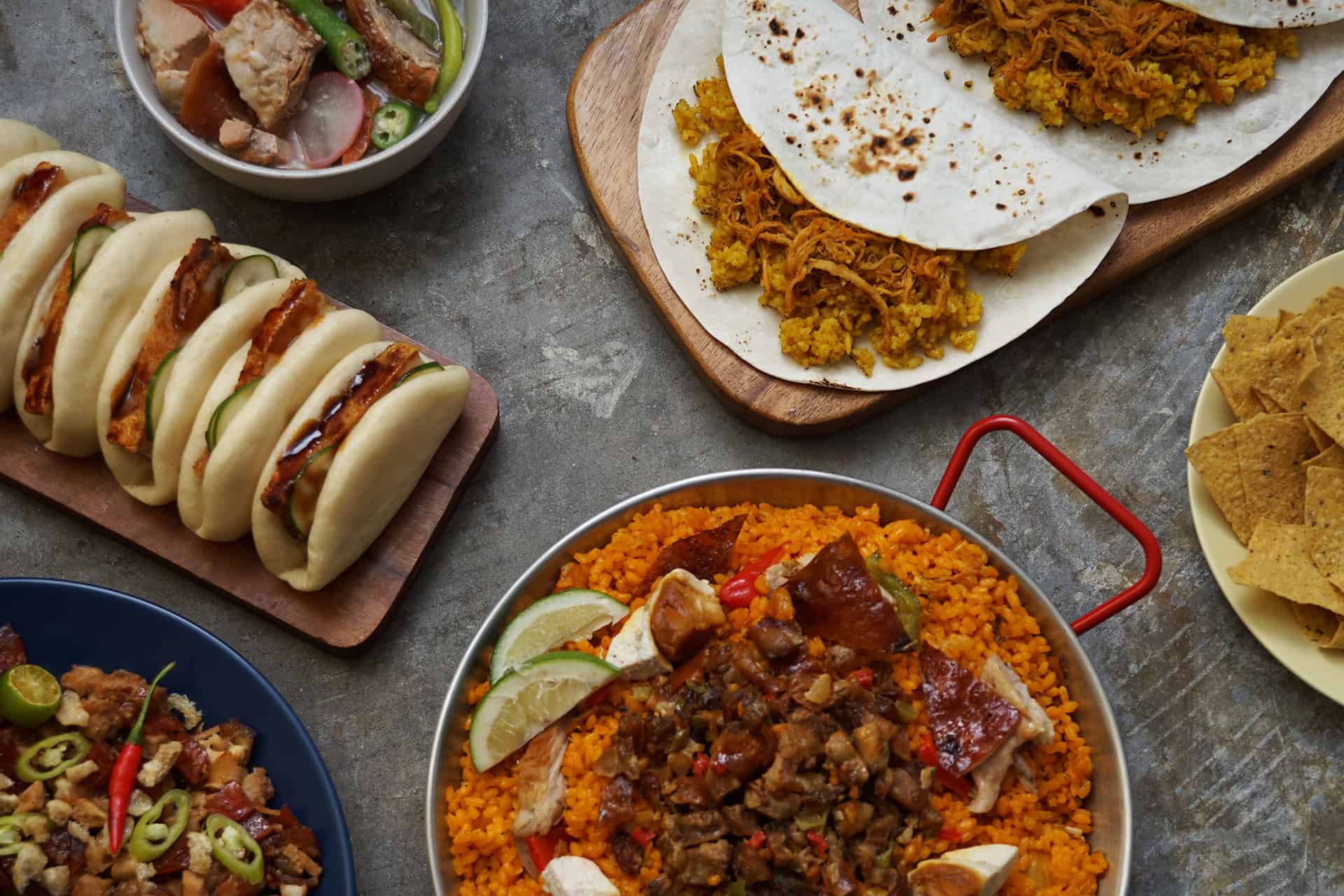
We cannot get enough of lechon— the quintessential Filipino celebration centerpiece of whole spit-roasted pig with its crispy skin, smooth and glistening, and the tender meat, juicy and seasoned perfectly. However, waiting for a huge gathering to be able to enjoy this is all in the past. Many lechon purveyors already offer their roasts by the kilo, some are even readily available frozen in supermarkets making it so convenient to give in to lechon cravings whenever and wherever.
With this new accessibility, home cooks and restaurants are finding fresh and innovative ways to serve lechon. Skin that has become soft and chewy is given new life crisped up in the toaster or fried in a pan. White meat that is less favored than the ribs and belly is utilized for soups, stews, or sandwiches. The possibilities have truly become endless.
Paksiw na lechon, which is a stew of the leftover meat and skin in vinegar and liver sauce, is the usual “second way” to this party dish that can be consumed until supplies last. Now, some are using the remains of their lechon to prepare other classic Filipino dishes.
Chopping up the prized head, with all the crispy skin of the face and the cartilage from the ears, is perfect for sisig (the popular Kapampangan bar chow of chopped pig face sautéed in onions and chili). Plus points, too, if the brain is included. Cooking the roasted pig meat in a sinigang broth (fruit-soured soup of your chosen protein, usually with kang kong, tomatoes, okra, and eggplant) imparts an incredible smoky flavor to the dish. Margarita Fores’s Grace Park in One Rockwell offers both these dishes using the organic Negros lechon that she flies in from Bacolod.
The lechon’s latin heritage cannot be denied and it makes complete sense to convert its leftover meat into popular hispanic dishes. Meat that has been pulled apart and cooked with aromatic chipotle peppers in adobo sauce is wonderful served as tacos. Chef Gino Gonzales’s collaboration with San Juan City’s iconic Leonardo’s Lechon uses the white meat of their Tagalog-style roast and offers it in a kit as pork carnitas with sharing portions of chili cilantro salsa, nacho cheese, turmeric rice, and 12 flour tortillas.
If a Spanish restaurant has cochinillo (spit or brick-oven roasted suckling pig) on the menu, it would be remiss to not put slivers of its crisp skin and buttery meat over paella. Alba Restaurante Español, a nostalgic favorite, has this among their expansive selection of the beloved rice dish.
Those looking to experiment with more oriental flavors can definitely put their lechon in a bao— a Chinese steamed bread roll usually stuffed with sliced barbecued meats, scallions, and a sweet sauce like hoisin or plum. They do this well at Kapitolyo haunt Cheech and Chang Hong Kong Roasts using decadent slices of their lechon Macau. Replicate this at home with some store-bought baos and condiments, served with local lechon.
While purists might balk at these new ways to enjoy lechon, it is a true sign of our culturally diverse and inclusive times. Regardless of provenance, when food is done right and comes out delicious, we say “dig in!”

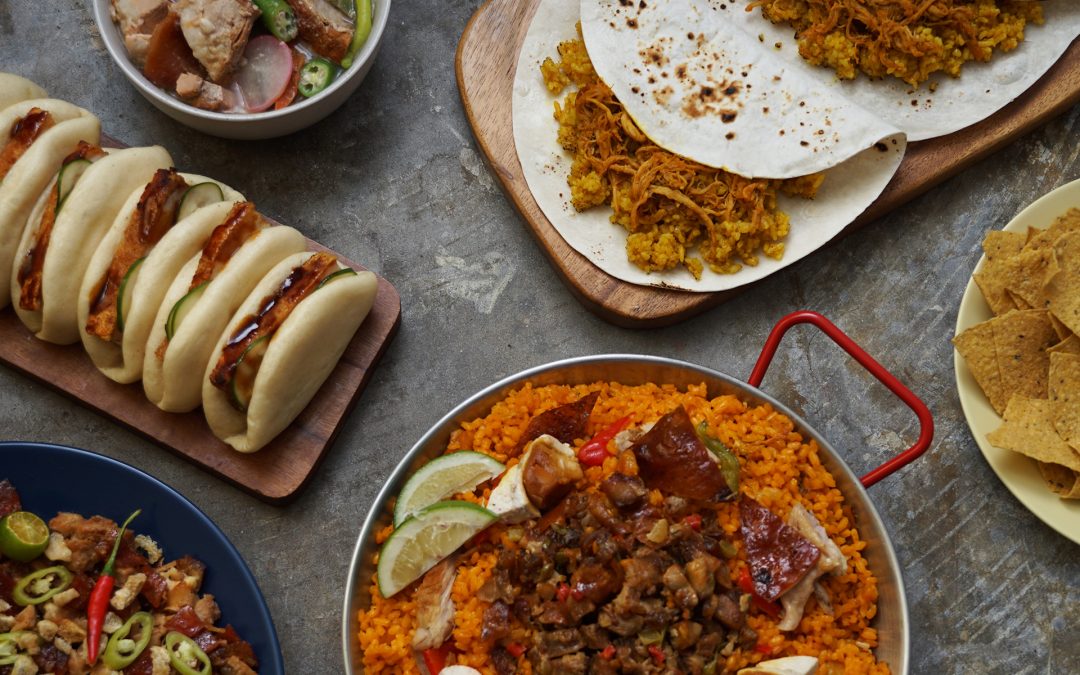
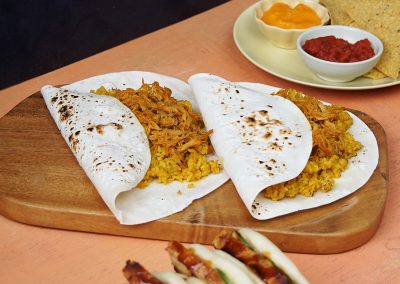
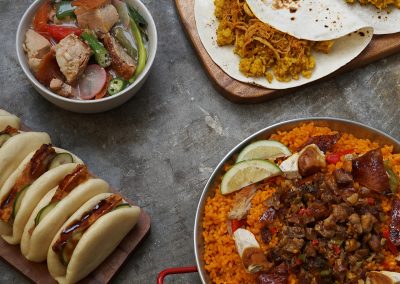
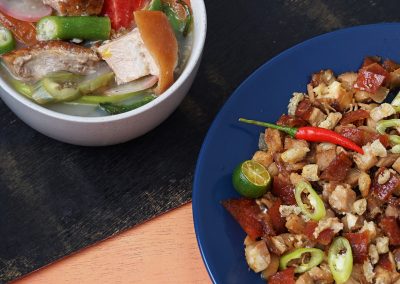

Recent Comments